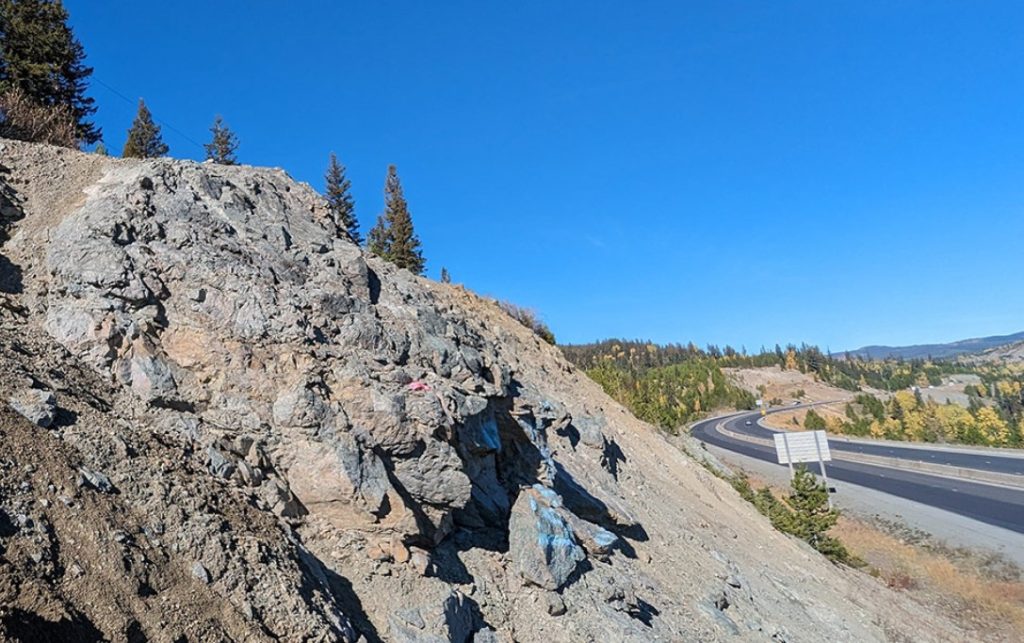Torr Metals identifies geophysical anomalies at Kolos Project, British Columbia

Torr Metals Inc. [TSXV-TMET] reported preliminary results that have identified near-surface high-priority geophysical resistivity anomalies extending up to 1.5 km depth that are coincident with highly anomalous copper (Cu), gold (Au) and molybdenum (Mo) mineralization at surface at the Kolos Project, central British Columbia.
These compelling exploration drill targets have been identified using a newly completed 3-D resistivity inversion voxel model, derived from the ZTEM (Z-axis tipper electromagnetic) geophysical survey completed over the entirety of the 100%-owned, approximately 140 km2 Kolos copper-gold project in late 2023.
The geophysical survey data were analyzed in conjunction with recently published soil geochemistry, revealing a multi-centred cluster porphyry trend spanning seven km. This trend encompasses five priority exploration targets for Cu-Au and Cu-Mo that delineate potential porphyry centres, all of which have never been drilled. Each target zone is defined by greater than 200 parts per million (ppm) Cu in soil with concentrations reaching a peaks of 1,175 ppm Cu and 725 parts per billion (ppb) Au. All of the priority exploration targets are road accessible from Highway 5, approximately 23 km north-northeast of the city of Merritt, B.C.
Highlights: Kilometre-scale surface exploration targets now extended to depth: The results of the 3-D resistivity inversions have confirmed multiple untested subsurface drilling opportunities with three major potential porphyry centres within the Lodi, Kirby and Clapperton zones together with two additional satellite Cu-Au porphyry epithermal targets within the Ace and Rea zones.
Multiple broad resistivity anomalies indicate impressive scale: Across the Lodi, Kirby and Clapperton zones, extensive low- to moderate- and high-resistivity anomalies span multiple kilometres in the subsurface, aligning with concentrated higher-grade Cu plus or minus Au plus or minus Mo mineralization at the surface.
Multiple large-scale geophysical anomalies coincident with surface mineralization: Analysis has confirmed an extensive anomalous resistivity signature, stretching over 4.8 km in strike length, connecting the Cu-Au Lodi and Kirby zones at depth. Copper-gold mineralization in both zones has a strong correlation to anomalous low to moderate resistivity, with anomalous signatures extending up to 1,000 metres in depth while measuring approximately 1,850 metres and approximately 2,500 metres in strike length within the Lodi and Kirby zones, respectively.
Anomalous copper-molybdenum in soil coincides with an at-surface high-resistivity anomaly at the Clapperton zone, attributed to an exposed quartz-rich domain, typical of the upper levels of a porphyry system, within a multiphase diorite intrusive host; resulting in an anomalous geophysical signature measuring approximately 1,400 metres in width and greater than 1,500 metres in depth.
Kirby zone expansion potential: The anomalous geophysical signature at the Kirby zone extends greater than 1,900 metres south of the 2023 soil grid, suggesting significant expansion potential with further soil sampling.
“The strong correlation between highly anomalous resistivity areas and known surface copper-gold and copper-molybdenum mineralization is incredibly promising,” said Malcolm Dorsey, president and CEO. “We are now identifying the robust plumbing behind these prolific mineralizing systems, indicating an immense scale of underlying potential. Torr is now equipped with the precise knowledge on where and how to best target these anomalies in the subsurface and with multiple untested zones delineated across a seven km cluster porphyry trend this is a significant opportunity for a potentially major new copper discovery located only 30 km from Canada’s largest open-pit copper mine at Highland Valley.”
Torr Metals is focused on defining and developing the substantial exploration potential of the Kolos copper-gold project, located within the prolific Quesnel terrane in central British Columbia. Year-round access is provided by Highway 5, with the project being favourably located 23 km north of the city of Merritt and 286 km by highway from Vancouver, B.C.
